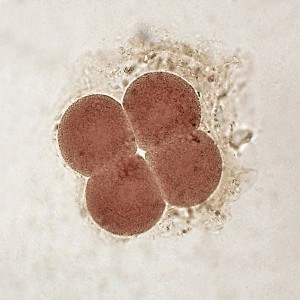MONDAY, 6 FEBRUARY 2012
Comprising cells from multiple genetically distinct individuals, chimeras occur only rarely in nature but are important tools for studying embryonic development. Chimeric mice are frequently generated in laboratories by injecting embryonic stem cells into early embryos, known as blastocysts. Incorporation of the cells into the embryo is an important readout of their pluripotency – the ability to give rise to all tissues of the developing animal. This technique has also been exploited to produce a number of genetic models including knock-out and reporter mice, in which a gene is removed or altered in order to study its role in development.To date, researchers have not been able to produce primate chimeras using this technique, casting doubt over the similarity of human stem cells and those of our most important model organism, the mouse. In the new Cell study, scientists attempted to make chimeras using rhesus monkey embryos. When embryonic stem cells were injected into blastocysts, the embryos failed to develop or did not incorporate the donor cells. However, when earlier embryos - consisting of only four cells - were aggregated, these did go on to develop into normal foetuses, with contributions from up to six individuals possible. Three chimeric monkeys have been born so far, and all are apparently healthy and free from defects.
While this study is a significant step forward in understanding the early embryonic development of primates, it also highlights fundamental differences between primates and the lower mammals, such as mice, on which most of our stem cell knowledge is based. Until such differences are reconciled, it will be difficult to bring therapies safely to the clinic. There is cause for optimism in the search for stem cell therapies, but regenerative medicine may still be some way off.
Written by Vicki Moignard
DOI: 10.1016/j.cell.2011.12.007

